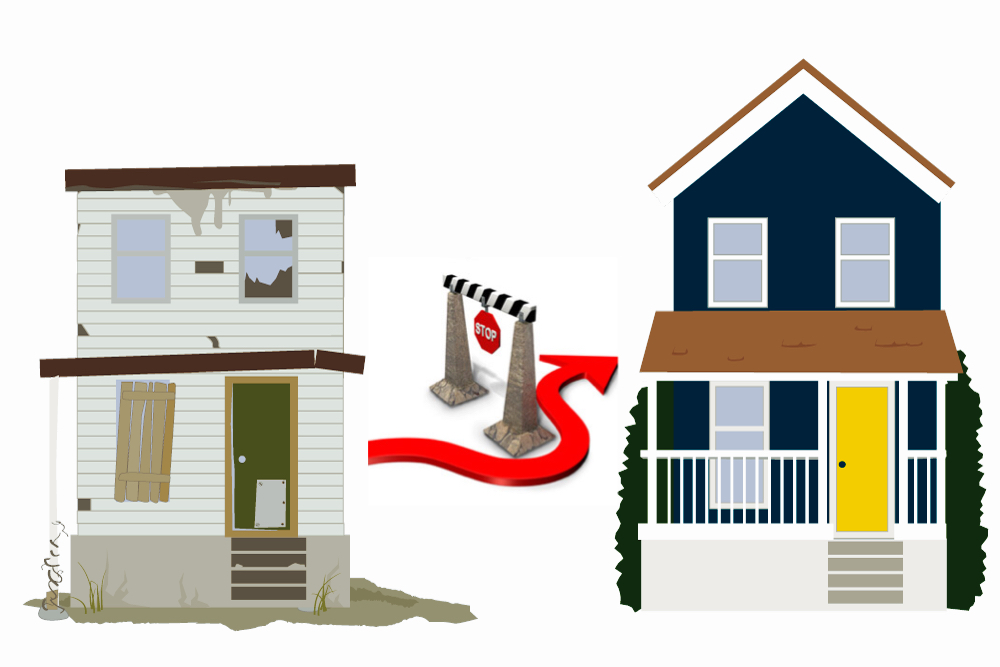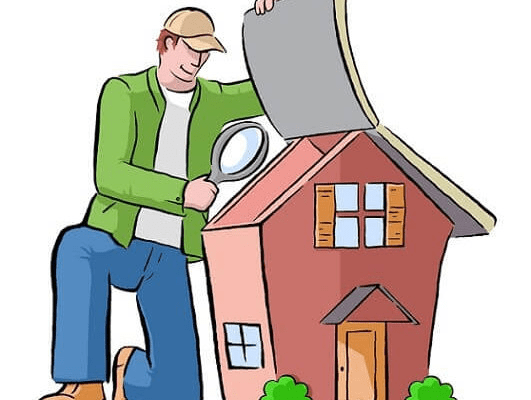Zoning And Why It’s Important
Understanding Your Township’s Attitude Towards Zoning Gives You Insight Into Your Neighborhood’s Future.
“Hey, why is there an alpaca farm down by the airport? Front yard, broad day, like it’s legal?”
Have you ever noticed how certain properties (and farm animals) exist in some places and not in others? Maybe you’re searching for a new house, investment property, or looking to start a new business. You start to notice that the stores, while numerous on the main streets, are not found in the suburbs. Ok, that seems logical. Schools tend to be nestled into the neighborhoods themselves rather than appearing near the main roads. Eyebrow-raising properties like gentlemen clubs and cannabis stores lurk in the dark corners of a strip mall. And, you’ll never see a mansion built next to a trailer park, it just doesn’t happen.
These differences we’re noticing, as with most neighborhoods in the Metro Detroit area, were not created out of thin air. Rather, over time, they were purposely designed by township officials and residents like you through a combination of zoning laws and a defined development plan. So, why can’t I have an alpaca now that I know what it is?
The zoning laws won’t let me.
Every homeowner or business owner should know that towns and cities across Michigan and the United States have what’s called zoning laws to control the types and uses of not only housing but land, public parks, business districts, nature areas, and even chemical plants. If you can imagine for a second that your community’s development is a big, smoke-billowing freight train barreling into the future, think of the zoning laws as the rails keeping it on the tracks as it chugs along.
If Nostradamus had wanted to peer into the future of his city, he would have studied the zoning laws and master plan to predict where it was headed.
Zoning is a tool by which your township manages community development. What’s driving this development is a plan outlined by your city. The master plan, as it’s called, is an official city document that outlines not only the “vision” for your community but how your officials (and the city’s residents, in theory) plan to achieve that vision. You can think of the master plan as a road map showing your town where to go. To go back to our train analogy, the plan is like the conductor driving the train forward. You can get your own city’s master plan at your assessor’s office.
Similar to what Treebeard and the Ents discovered in the movie, The Lord of the Rings: The Two Towers, when they witnessed their forest being chopped down— you can’t ignore what’s going on in your community.
Therefore, whether things are going great or the Sauron of your town has an illegal brushfire going in their backyard, you got to pay attention. Whether you like it or not, as a homeowner or business owner within the community, what your town decides affects you.
If you’re a homeowner, you’ve got a lot of skin in the game (or will be if you’re buying into the neighborhood), so you’ll want like-minded township officials and neighbors that are as committed as you are to developing the community in a way that protects your home’s value.
Likewise, if you’re a business owner or commercial real estate developer, knowing the zoning laws can turn you a fine profit.
This is especially true when zoning laws change. For example, the recent legalization of medical marijuana in Michigan is opening up land and property to facilitate this new use. Warehouses and vacant land that hadn’t been occupied for years are suddenly being repurposed to grow marijuana. As a result, the values on these properties are rising—all because they changed the zoning laws.
Therefore, you’ll want to do two things: First, gain an understanding of your local real estate market by paying attention to your neighborhood (not just your house). Second, know the basics of your township’s zoning laws and master plan.
To Understand The Neighborhood You Need To “Get Local”
Whether you’re a homeowner, business owner, or real estate investor, before thinking about where your neighborhood or town might be heading, take stock of where it’s at today.
So get out there.
Hitting the streets in your car, bicycle, or chosen form of locomotion is by far the best way to get a pulse on the neighborhood in which you’re looking to buy properties. As a real estate agent, I do this all the time. Partly because it’s my job for pete’s sake, but partly too because the streets will give you unparalleled insight into any local housing market.
While it’s fun to stare at Zillow, Trulia, and other sources all day (and this blog, if I may say so myself), in the end, you need to get out and explore. Real estate is a fundamentally local business. You need to get local! So, put your IPad or smartphone aside and get out there and pound the pavement.
Now, I’m not necessarily talking about looking at house after house with your real estate agent on a house-searching safari. Clearly, checking out a number of houses is a vital part of building an idea of what’s out there. Comparing houses to one another is a major step in determining what’s a good deal and what’s not. However, you need to see the bigger picture. You need to consider where your house or investment property sits within the greater community.
Make sure to pay attention to the area around your house: Look at the other houses in the area. Are there any wooded lots or parks nearby or schools and churches within walking distance? Consider the “undesirable” features too that are nearby like an airport or a busy street corner. Is your area near bike paths? Is it near the main street? How easy is it to access the main transportation arteries to get to work? These are all questions you need to ask yourself to understand the environment in which you’re looking to buy. And, even if you’re not looking to live there but want a property in which to invest, your future renter is going to be asking these same questions.
How Zoning Laws Guide The Current and Future Progress Of Your Neighborhood
Today, chances are that if you live in a town or a suburb, no building, public park, or business was put there was sheer accident. Why? Dear reader this not ‘Nam, this is real estate, there are rules.
Zoning laws were established at the turn of the 20th century as a management tool. Probably because someone was pissed off at their neighbor for having an alpaca in their backyard. I’m kidding—but it’s true that without zoning laws there was nothing stopping people from doing all sorts of crazy stuff with their property.
Many years ago, townships and cities finally figured out that having your residential housing mixed with industrial and business areas caused a sloppy mess and made community development hard to do. So today, they designate specific areas where all of these activities—whether they be business, living, or industry—can take place in separate areas.
To accomplish this designation, townships came up with the idea of having “zones” for certain uses. These zones were outlined in zoning maps to help people understand where all the different zones are located and what they’re used for. The township of Grosse Ile has a zoning map which can be found here. You can find your own city or township’s zoning map by contacting your community development office.
Zoning is the tool that also allows the township to influence the supply and type of available housing. For example, zoning may call for a neighborhood to consist of single-family homes. Or, it may call for a variety of different residences such as triplexes, duplexes, and even tiny homes. For example, a community of families would seem to call for a lot of single-family homes. Alternatively, an area near a college town might need zoning to permit multi-family housing to accommodate single dwellers.
The type of housing a community chooses affects everything from the character of the neighborhood; to how many people live in a certain area; to how affordable housing is in the community. Zoning is used to dictate the size of buildings and how they relate to each other, to open spaces, and to the street.
Zoning also allows a city to manage pedestrian pathways and sidewalks to support people traveling on foot. Pedestrian-friendly cities like to help make a downtown walkable through the expansion of sidewalks and bike paths.
Zoning Categories
All of these zones are organized into using what’s called zoning classifications. A zoning classification is a letter-number combination that essentially says what’s allowed on a plot of land. Classifications used to describe zoning are not uniform from place to place. Nevertheless, most cities and towns will designate a certain letter-number combination for a type of use (R for residential, C for commercial, I for industrial, etc.) The number that follows—R1 for example—designates the density, or how many people are living within that space.

Additionally, zoning classifications indicate other design requirements. In the Metro Detroit area, we are mostly dealing with minimum and maximum restrictions on our buildings rather than any specific value. For example, your R1 classification might not only stand for a single family home but also dictate things like: How high a house can be. Or, how much floor space a house needs relative to the building area.
Also, the classification might come with a setback design requirement. A setback is the minimum distance a structure must be from the property line. Setbacks are used to make sure no builder is going to put a house close too to the street, preventing not only noise pollution but the occasional drunk driver from careening off the road into your property.
The floor area ratio or FAR is the ratio of floor area to lot area and enforces how many square feet that can be developed on a plot. For instance, a FAR of 4.0 indicates that a builder needs four times as much lot area than floor space.
You might also hear another design requirement called lot coverage. Lot coverage maximums can limit a builder’s construction area to only a certain percentage of the lot. For example, he might only be able to utilize 20 percent of the parcel due to lot coverage restrictions. This can be done in a community to preserve the environment, or even keep a more wooded feel in a place like a suburban neighborhood.
Your town or city might even have a minimum lot size to prevent builders from maxing out some tiny parcel with a mega-home.
Zoning For Business
Zoning also covers businesses. If you’re a current or prospective small business owner, or if you’re a homeowner near a business district, you’ll want to have a sense of business zoning.
It’s important for business zoning that before you lease a space, purchase land, or buy a building that you understand how that property is zoned. For example, just because you find the warehouse you’re looking for, it doesn’t mean the property is zoned for what you intend to use it for. For example, if you want to use it to open up a nightclub, you’d better be sure you’re proposed commercial use is allowed on the property.
Different states, cities, and townships have different business zoning laws. In the city of San Antonio, for example, you can’t have alcohol sales on any property within 300 feet of a church, school or hospital. Nor can you operate a live entertainment business within 1,000 feet of a school or church. Seems reasonable, yet people make the mistake of buying property thinking that it is going to support their intended commercial use only to make a costly mistake.
Zoning Exceptions
As with anything, there are ways you can get exceptions to zoning laws with the approval of your township officials. A variance is a zoning exception that is granted by your township for any zoning requirement that prevents the builder from executing certain project goals. Usually these are only approved if the builder can find some financial or structural reason for needing the exception.
Another zoning exception can be done whenever you want to increase or decrease the size or type of structure you want to build. For example, upzoning is used when you want to build a duplex or triplex in an area that has been traditionally single family homes. Conversely, downzoning is used when a community wants to stay small and spread-out.
Downzoning is particularly contentious in urban areas these days due to the high cost of housing, so there’s a push right now for upzoning vice downzoning in general across America.
Townships sometimes produce an annual report that documents all zoning cases held, what the issue was, and whether or not the requested exemption was approved.
Good luck diving into zoning. And be sure to check with your township or city to get the specifics in your area.



